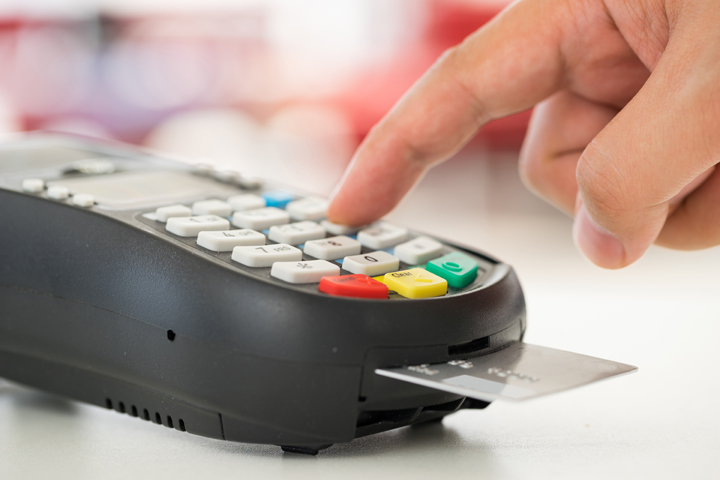What you need to know about that embedded microchip on your new credit and debit card
(BPT) - Did your bank recently send you a new card with an embedded microchip on it? If you don’t already have one, you will soon. Consumers and businesses suffer from increased fraud, which costs the industry billions of dollars each year, and the transition to chip technology is intended to make it harder for crooks to commit fraud using counterfeit cards. Chase offers some facts on how chip technology works and how it will help make your payments more secure:
What is driving the shift to chip?

As of Oct. 1, the payment networks made a change that gives businesses a good reason to adopt chip readers now. The new rules require businesses to use payment terminals equipped to handle chip-enabled cards, or businesses will pay the price for counterfeit fraud if the customer has a chip-enabled card and they can’t accept it.
Chip readers are important because they stop crooks in their tracks. If a thief tries to use a counterfeit card to make a purchase at a chip reader, the reader will prompt them to insert their card so they can verify that the chip is legitimate. Businesses that aren’t chip ready will have to assume the liability for counterfeit spending that occurs because the chip reader wasn’t there to stop it.
For cardholders, it just means a new way to pay. You are still covered with the same fraud liability protections that you are today. It’s just the overall cost of fraud to the industry – businesses and card issuers – will decrease over time. In the long run, everyone will win.
The skinny on the chips

Chip-enabled cards have small microchips built into them. When you use your chip-enabled card on an EMV-ready card terminal, the chip produces a single-use code to validate your transaction. It’s one more layer of security to protect your card from unauthorized use — and it’s already the standard in Canada, Mexico, South America, Europe and Asia.
Using your new chip card is easy

When you use your new card to make a purchase on a chip-enabled terminal, you’ll insert the card into the slot on the front of the card reader. The terminal display will ask you to leave the card in place until your purchase is complete. It may take a few seconds longer than a swipe. If a signature or PIN number is required, just sign or punch in your PIN and remember to take your card. You can also use the card with a reader that’s not chip-enabled; simply swipe the magnetic stripe on the back as you would with a magnetic stripe card. Internet, phone transactions and recurring payments will work the same way as they do today — no additional steps are necessary to use a chip-enabled card.
Out with the old, in with the new

Pretty soon, you probably won’t have a single unchipped credit or debit card in your wallet. Because of the security advantages that chip technology offers, card issuers like Chase are replacing old style cards with chip-enabled cards. And your chip-enabled Chase credit or debit card still provides all the same features and benefits you currently receive. Just shred or cut up your old card. If you have a metal card, mail it back to Chase in the envelope provided with your new chip-enabled card.
Vigilance is still important

Chip technology adds a layer of strong security, but no measure is completely fail safe. That’s why your card issuer takes extra steps to keep your transactions secure, and so should you. Chase provides cardholders with Zero-Liability Protection, Chase Fraud Alerts and 24/7 Fraud Monitoring.
Tokenization is the next security advancement and is aimed at reducing mobile and online fraud. It’s already available when you use your card with digital wallets today, and will be available more broadly in the near future. Tokenization technology replaces sensitive account information at the cash register or online with a random string of letters, characters and numbers called a “token.” It’s used for that one transaction only, rendering the information useless to criminals if the token is stolen. Because merchants don’t hold your account information, there’s no chance it can be lost or stolen through the transaction. Chip, together with tokenization technology, are expected to revolutionize the payments industry and significantly cut down fraud at point of sale, online and via mobile.
To learn more about chip technology and how it will make transactions more secure, visit www.chase.com/chip.


